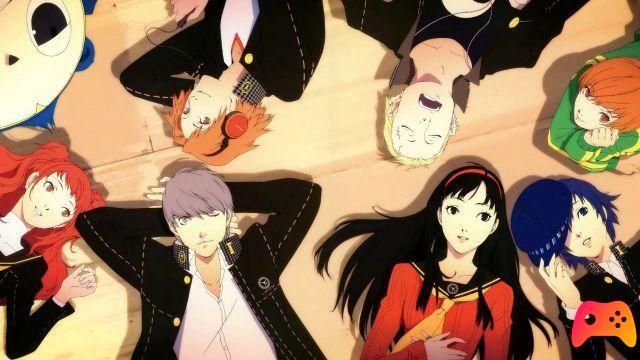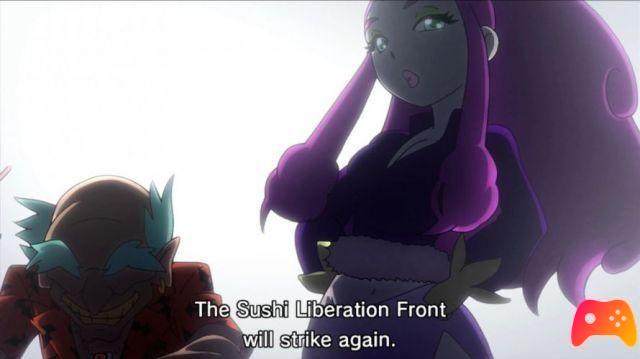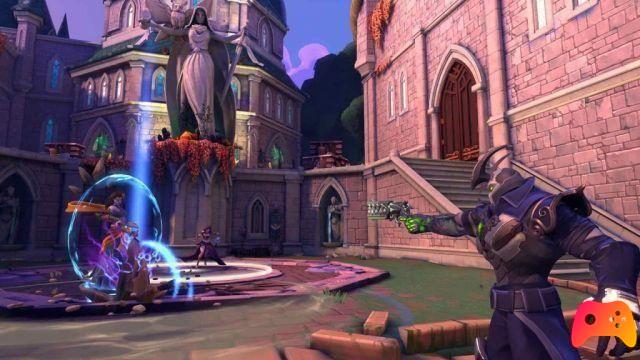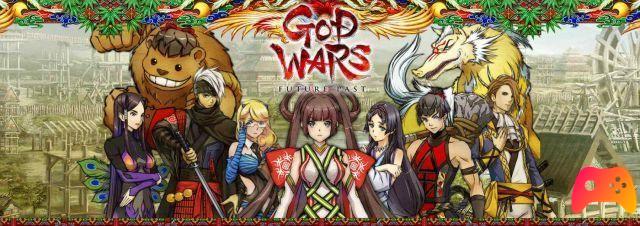
Review for God Wars: Future Past. Game for PlayStation 4 and PlayStation Vita, the video game was released on 23/02/2017 The version for PlayStation 4 came out on 30/06/2017
God Wars: Future Past is a tactical RPG developed by Kadokawa games and advertised by Nis America, arrived in Europe on June 16, 2017. This title, available on PlayStation 4 and Playstation Vita, is a small pearl within an increasingly less varied genre of video games. It contains some of the glories from other titles of its kind, like Final Fantasy Tactics or Disgaea, within an original and typical story, closely linked to Japanese myths and folklore.
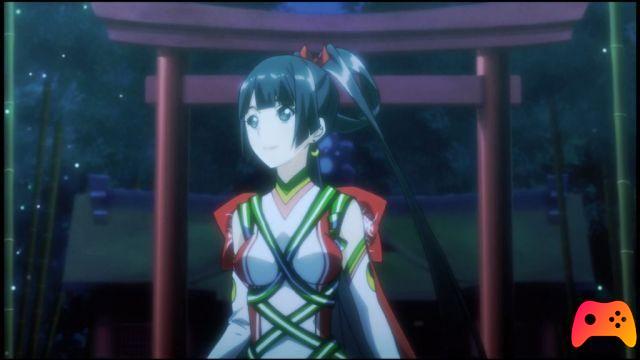
A war against the wrath of the gods
The setting for God Wars: Future Past settles fairly quickly. As the young Kintaro, we will go to free Princess Kaguya, sealed inside a temple by her mother Tsukuyomi. The young woman was locked up as a future sacrificial victim to appease the wrath of the gods. Kintaro, with Kuma's help, frees the princess only to discover that her parent has actually been missing for many years. The mother in the past sacrificed the firstborn, Sakuya, always for the same reason. From that day on she disappeared, and no one heard from her again. Kaguya will leave in search of her mother along with Kintaro and Kuma to find out the reason for these sacrifices.
During the long journey, Kaguya will discover that the wrath of the gods is due to the way of life of humans, become ungrateful and insensitive towards nature and life itself with the passage of time, ignoring what the gods have always granted them. Many characters will join Kaguya, others will hinder her, characters whose very name suggests their presence in the mythologies typical of feudal Japan.
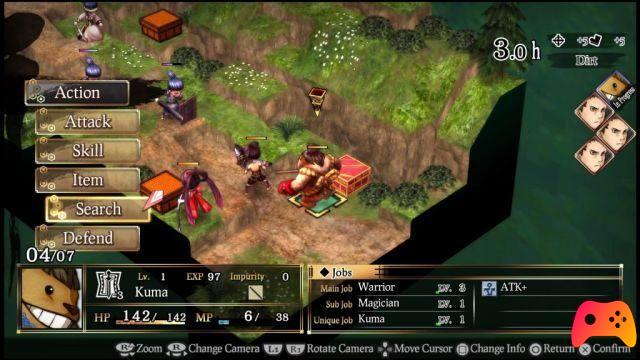
The battle system: The spearhead of the title
The combat system is incredibly varied, rich and deep, in that it allows an “almost” complete customization how you will use your characters in battle thanks to a system of "Jobs" similar to that of Final Fantasy Tactics, but more complex. There are a total of 17 identical Jobs for all characters, with the addition of an exclusive "Single Job", for a total of 18 each. Accumulating experience will unlock new Jobs, starting from the classics known everywhere, such as the archer, the black magician and the warrior up to advanced jobs such as Ranger, Spiritualist and Samurai.
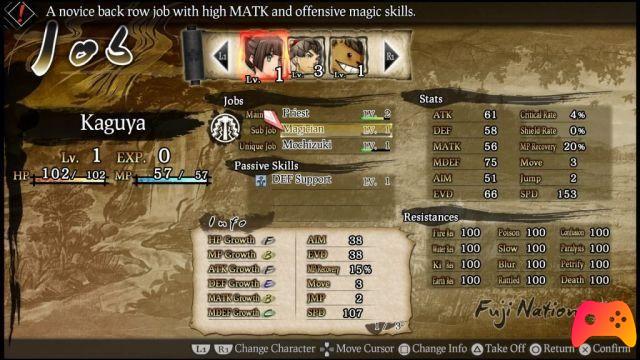
Each character can take advantage of 3 Jobs at the same time. The Main Job will be the one that will conform the character the most, and will determine his equipment, skills and stats. The "Sub Job" has a secondary role, as the name suggests, its purpose is to give mostly additional techniques to be used in combat (with less effectiveness), and finally "Unique Job", that is the unique one for that character, which it can never be changed. Grants special abilities and attacks that no other character can possess.
The “almost” complete customization mentioned above is precisely dictated by the Unique Job. Thanks to it, together with a base of statistics, there is still a dividing line between one character and another, making them less anonymous and still suitable for different situations. A character like Kuma will be more and more inclined to hand-to-hand combat than a Kaguya, even at the same level and Jobs.
Each Job gains experience as you fight, thanks to the Job Points obtained whenever an action is taken in battle, whether it is using an item, attacking an enemy or healing an ally. By leveling new ones will be unlocked, and with the accumulated Job Points it is possible to learn new techniques or enhance those already learned.
Passive skills add to the icing on the cake. Each Job, taking advantage of the points obtained, has three passive skills that can be unlocked. These are usually related to the Job they belong to, such as an increase in maximum MP in the case of the black mage, or the ability to equip shields in the case of the warrior.
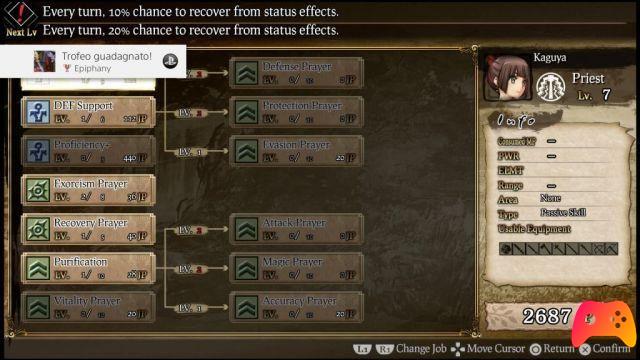
Unlocking as many passive skills will allow an even greater customization of the heroes in question, and to indulge in a lot of combinations. In this way it is possible to create a Samurai, uniquely suited for offensive and close combat, able to heal his wounds or increase his parameters thanks to the use of white magic, or a black wizard, typically known for its poor defense, with the defensive abilities of a monk or able to equip a shield to reduce damage.
If there's one thing that needs to be really well done in an RPG, especially a tactical one, it's the combat system. And needless to say, you'll spend a LOT of time between battlefields, especially if you try to do sidequests as well. Fortunately, God Wars: Future Past excels in this area, trying to break this monotony as much as possible thanks to a rich and deep combat and learning system.
A single sore point in this Gameplay is the slowness with which the battles proceed, and by this I don't mean the time it takes the player to find the best strategy to win, but the longevity of the battle itself, between slow animations and a technical sector a a bit dated for a title destined for PlayStation 4 and Vita. Fueling this slowness is the incredible ability of AI.
The enemy will determine his moves precisely and subtly, even with a difficulty setting set to Normal. Enemy units will go to great lengths to target your units, rendering them unable to do their duty as they should. Enemies will often attempt to damage your mages' MPs, paralyze or blind your melee-ready and short-range units.
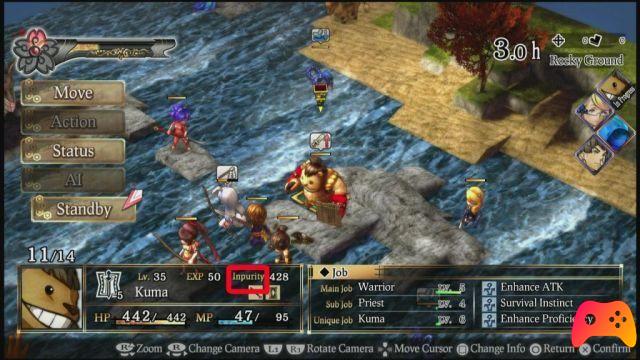
The only way to "deflect" the aggression of the enemy is to play on the "Impurity" factor, a parameter that each character has and which increases according to the amount of attacks launched in battle. The more impure a character is, the more chance he has of being targeted by enemies. Fortunately, you can "play" with this factor thanks to objects and techniques that can raise or lower this parameter.
Combining these factors will ensure that the battles are longer than they should. It is clear that in a tactical RPG the battles take longer, but in God Wars: Future Past this threshold is exceeded a little, which can be particularly inconvenient if you opt to play the PlayStation 4 version, rather than on PS Vita. more accessible from this point of view, being a portable console.
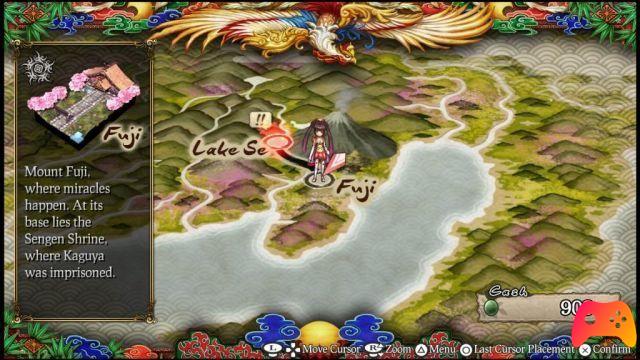
An atmosphere recreated with fidelity
We have already introduced the presence of the myths and elements of Japanese Folklore. How to best accentuate this atmosphere? With a perfectly fitting artistic direction and soundtrack. From character design to maps and settings, anyone would know on the fly that this is Japan. Some of the characters that will accompany Kaguya are made to recall the creatures of mythology, such as Kuma or the two Oni, the red and blue one. To identify even better in the Japanese fiefdom, the choice of dubbing in Japanese is available, if you prefer it to the English one.
Of course, changes have been made to make them usable in battle. Inaba, for example, has always been portrayed as a rabbit in the folkloric land of the rising sun, but in God Wars: Future Past she was drawn as a little girl with bunny ears and tail. If the design is successful from the point of view of fidelity, from the technical side it leaves something to be desired.
There is excessive static during the dialogues or in the cutscenes, the characters don't even change their posture during all scenes in the game. The only variation will be the facial expression. It may not seem like a big deal, and it is actually passable, but look at the image below
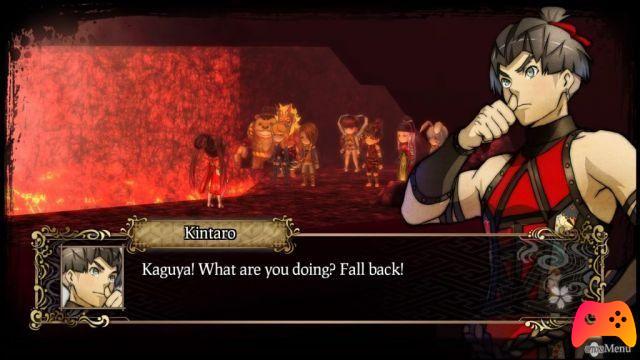
Regardless of the situation, Kintaro's pose will always be this, with a finger under his nose. Not a big flaw, but it's definitely out of place depending on what's going on. It can ruin a touching moment, or break the tension of a dangerous situation. And the same thing is repeated with everyone: the characters will have only one pose throughout the course of the game.
The cast of the main characters is varied: from Ookuninushi and his thin figures with women, to the calm and rational priestess Hanasaka, without excluding a hint of fanservice, if we consider characters like Aome and Inaba. Although their presence has a more or less decisive impact on the main storyline, their backgrounds are a bit superficial, with the exception of Kaguya.
From the musical point of view, nothing to complain about except the repetitiveness. The music created for this title are well cared for and relevant to the situation presented to the player, with symphonies that recall the Japanese feudal period, without particularly excelling. But a wider selection of tracks would have helped break the monotony a little.
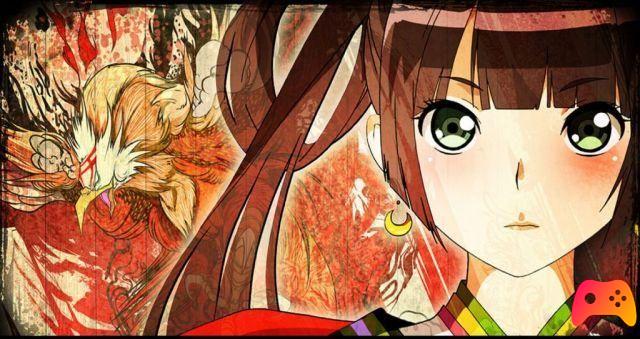
God Wars: Future Past is an excellent title in its genre, as we have not seen for years. Its classicism will immediately captivate longtime fans of tactical RPGs. It is clear that the game does not stand out from a technical point of view for the consoles on which it is intended, due to its cumbersome and slowness. But the battle system is the flagship that makes this title extraordinary, thanks to its mechanics, its vastness and the extensive customization of the Jobs. Although the AI is particularly tough and aggressive, the ability to change the game difficulty will make the title enjoyable even for those who don't chew the genre. If you love tactics, God Wars: Future Past is a must-have in your RPG collection.
► God Wars: Future Past is a JRPG-type game developed and published by Kadokawa Games for PlayStation 4 and PlayStation Vita, the video game was released on 23/02/2017 The version for PlayStation 4 came out on 30/06/2017




